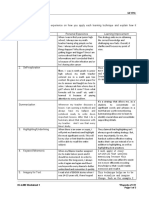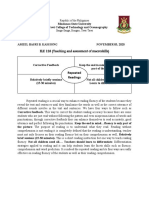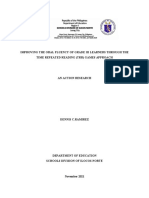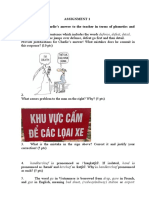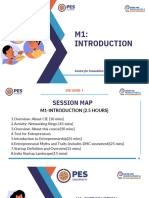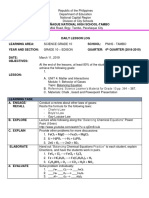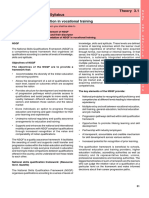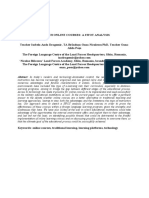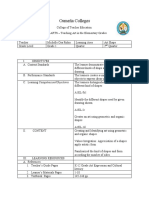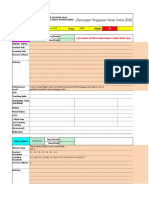Chapter I
,
Introduction
In the world of education, effective study techniques play a crucial role in enhancing students'
academic performance. Among the array of strategies explored by educators and researchers, the
blurting method has emerged as a potential avenue for improving academic outcomes. The
blurting method, also known as the "blank sheet" technique, entails reading key information from
a lesson and subsequently writing down everything recalled without consulting notes or
textbooks. This technique fosters active recall, relying on one's memory and understanding of the
,material. By engaging in immediate recall and writing, students reinforce their learning, pinpoint
areas for further review, and promote deeper comprehension, critical thinking, and long-term
retention of the studied material. It is essential to acknowledge that the effectiveness of the
blurting method may vary among individuals due to diverse learning styles and preferences.
Nevertheless, many students have reported positive outcomes using this technique to enhance
their understanding and performance across various subjects.
According to Scribzee, the blurting method is widely adopted by high school and
university students for its simplicity and efficacy. This active recall technique challenges students
to engage directly with the material, stimulating their brains and strengthening memory retention.
By actively recalling and summarizing information without external aids, students can identify
knowledge gaps, enhancing their comprehension and focusing their study efforts on areas
needing improvement.
Research has shown that the blurting method enhances students' comprehension and
retention of subject matter. Through active engagement with the material, students develop a
deeper understanding of concepts, improve their ability to apply knowledge in different contexts,
and sharpen critical thinking and problem-solving skills. By articulating thoughts and ideas
without external aids, students achieve a higher level of comprehension, fostering the capacity to
analyze and synthesize information effectively.
Statement of the Problem
This research is dedicated to examining the effectiveness of the blurting method as a
study technique and its impact on the academic performance of Grade 8 and 9 students at MSU-
MSAT. The study aims to assess how the blurting method influences understanding, memory
retention, and practical application of knowledge among these students. Moreover, it seeks to
uncover the constraints and outcomes associated with implementing the blurting method in the
academic performance of Grade 8 and 9 MSU-MSAT students. By concentrating on this specific
student group, the research aims to offer valuable insights into effective study methods,
benefiting educators, students, and researchers.
Research Questions:
� 1. How does the utilization of the blurting method as a study technique impact the
academic performance of Grade 8 and 9 students at MSU-MSAT in terms of comprehension and
knowledge retention?
2. What are the limitations and effects of implementing the blurting method on the
academic performance of Grade 8 and 9 MSU-MSAT students, and how do these findings
contribute to enhancing effective study techniques?
The utilization of the blurting method as a study technique among Grade 8 and 9 students
at MSU-MSAT has a significant impact on their academic performance. This method enhances
comprehension and knowledge retention by promoting active recall and reinforcing learning
through immediate retrieval and writing down of information. Students engaging in the blurting
method develop a deeper understanding of concepts, improve their ability to apply knowledge in
various contexts, and sharpen critical thinking skills. However, limitations may appear, such as
varying effectiveness based on individual learning styles and preferences. Despite these
limitations, the implementation of the blurting method contributes to enhancing effective study
techniques by encouraging students to engage directly with the material, identify knowledge
gaps, and focus their study efforts on areas needing improvement, ultimately leading to improved
academic performance.
Background of the Study
While previous research has explored the effectiveness of the blurting method in general,
there remains a gap in understanding its specific impact on the academic performance of Grade 8
and 9 MSU-MSAT students. This study seeks to bridge this gap by providing tailored insights for
this student population, shedding light on the benefits and challenges associated with the blurting
method within their academic context.
Importance of the Study
This research holds significance in its potential to enhance the academic performance of
Grade 8 and 9 MSU-MSAT students. By delving into the effectiveness of the blurting method,
the study can offer evidence-based insights for educators, students, and researchers. Educators
stand to gain a deeper understanding of the advantages and implications of integrating the
blurting method into their teaching practices, facilitating informed decision-making. Students can
benefit from improved study strategies aligned with their specific needs, ultimately bolstering
their comprehension, retention, and application of knowledge.
Scope and Limitations
This research focuses specifically on the blurting method as a study technique for high
school students at MSU-MSAT. The study will encompass Grade 8 and 9 students, comprising
the sample population from these two grade levels.
� Overview of the Report
This research paper centers on examining the effectiveness of the blurting method as a
study technique among Grade 8 and 9 MSU-MSAT students' academic performance. It
commences with an introduction elucidating the research topic and the rationale for investigating
the blurting method. The research methodology section delineates the study's approach,
encompassing data collection methods and sample selection.
Definition of Terms
- Blurting Method: A study technique involving active recall and writing down
information from memory without referring to external aids.
- Academic Performance: The measure of a student's achievement and success in
academic pursuits.























